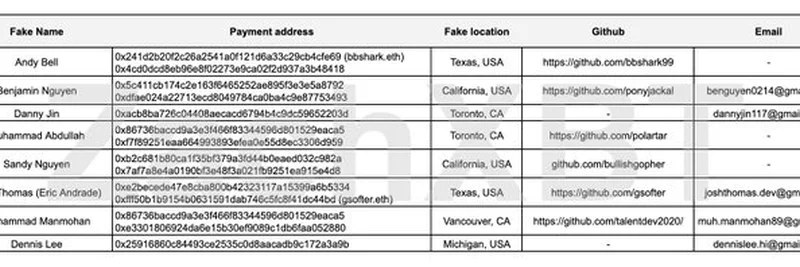Hey there, crypto enthusiasts and blockchain buffs! If you’ve been keeping an eye on the latest developments in the crypto world, you’ve probably heard whispers about North Korean IT workers sneaking into remote tech jobs. Well, buckle up because a recent investigation by the crypto sleuth ZachXBT has blown the lid off a massive scheme. Let’s dive into the details of how over $16.58 million has been funneled to these workers since January 2025—and what it means for the industry.
The Shocking Revelation
ZachXBT, a well-known figure in on-chain analysis, dropped a thread on X on July 2, 2025, that’s got everyone talking. According to the investigation, more than $16.58 million—averaging $2.76 million per month—has been paid to North Korean IT workers posing as developers. These payments, ranging from $3,000 to $8,000 per month, suggest that between 345 and 920 jobs have been infiltrated. That’s a staggering number, and it’s a wake-up call for companies hiring remote talent.
The thread includes a handy table (check out the image below) listing fake names, payment addresses, locations, GitHub profiles, and emails. Names like "Andy Bell" and "Sandy Nguyen" pop up, with payment addresses tied to Ethereum and fake locations like Texas, California, and Toronto. It’s a clever disguise, but the breadcrumbs lead back to North Korea.
How They Pull It Off
So, how do these workers manage to infiltrate so many roles? ZachXBT’s investigation points to a mix of fake identities and sophisticated coordination. The second image in the thread shows a video call with multiple participants, including someone labeled "Sandy Nguyen." This visual evidence, paired with open-source intelligence (OSINT), ties this individual to a North Korean event—complete with a flag in the background. It’s a clear sign that these aren’t your average remote developers.
The thread also highlights red flags that teams should watch for, like IT workers refusing in-person meetings, using Russian IPs despite claiming to be in California, or referring each other for jobs. These patterns, combined with deleted LinkedIn profiles and failed KYC checks, are telltale signs of trouble.
The Crypto Connection
What makes this story even juicier is the role of cryptocurrencies, especially stablecoins like USDC. ZachXBT traced payments from Circle accounts to addresses linked to this scheme, including one blacklisted by Tether in 2023. This raises questions about the effectiveness of stablecoin providers in preventing illicit activity. While Bitcoin used to be the go-to for ransomware, stablecoins are now the preferred tool for these transactions due to their stability and speed.
The investigation also notes that these workers often juggle multiple roles, get fired for underperformance, and pose a risk to projects by inserting vulnerabilities. Companies like LND and Munchables have already felt the heat from such incidents.
Why It Matters
This isn’t just a crypto problem—it’s a global tech issue. ZachXBT points out that traditional tech companies are just as vulnerable, but the traceability of crypto payments makes these schemes easier to spot. The rise of neobanks and fintech with stablecoin integrations has only made it easier for these workers to convert fiat to crypto.
The bigger takeaway? Hiring cheap, unvetted talent can backfire spectacularly. ZachXBT suggests that teams with multiple North Korean IT workers are a red flag for startup failure, often due to negligent hiring practices amid a talent shortage.
What’s Next?
ZachXBT is keeping an eye on five more clusters of these workers but isn’t spilling the beans publicly yet. The investigation also hints at evolving trends, like the shift from Binance to US exchanges like Coinbase for laundering funds. As the crypto space grows, so does the need for better security and awareness.
For blockchain practitioners, this is a goldmine of insight. If you’re building or investing in a project, double-check your team’s credentials and watch for those red flags. And if you’re curious about more meme token news or blockchain trends, stick around at meme-insider.com for the latest scoops!
What do you think about this investigation? Have you spotted any suspicious activity in your own projects? Drop your thoughts in the comments—we’d love to hear from you!


